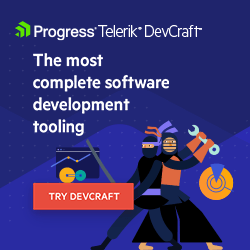What’s Inside the New AI Building Blocks in Telerik and Kendo UI

The AI Building Blocks and Page Templates in Telerik and Kendo UI represent a helpful step forward in simplifying AI interface development. Learn more about them.
Building AI-powered interfaces has become essential in modern web development. In 2025, users expect intelligent, conversational experiences that feel natural and provide real value. With the growing importance of AI across applications, developers need ready-made components that deliver these experiences without having to start from scratch.
Progress has long provided comprehensive component libraries, Telerik and Kendo UI, for building enterprise-grade applications. The recent 2025 Q2 release introduced AI-specific building blocks that address the unique challenges of creating AI-driven user interfaces.
In this article, we’ll explore the new AI Building Blocks introduced in the Telerik and Kendo UI ecosystem.
Page Templates
Telerik and Kendo UI Page Templates provide professionally designed, fully functional pages that serve as starting points for common application scenarios. These templates come preconfigured with Telerik UI for Blazor, Kendo UI for Angular and KendoReact components, eliminating the need to build layouts from scratch.
Currently, the template collection includes around a dozen different designs covering various industries and use cases:
- Landing Pages: Templates for SaaS products, automotive industry and travel companies
- Listing Pages: Fashion catalogs, real estate listings and product showcases
- Dashboards: Fintech dashboards, healthcare admin panels, international banking interfaces and project trackers
Each template is fully accessible, responsive and customizable. You simply install the project template for your chosen framework and modify it based on your specific requirements.
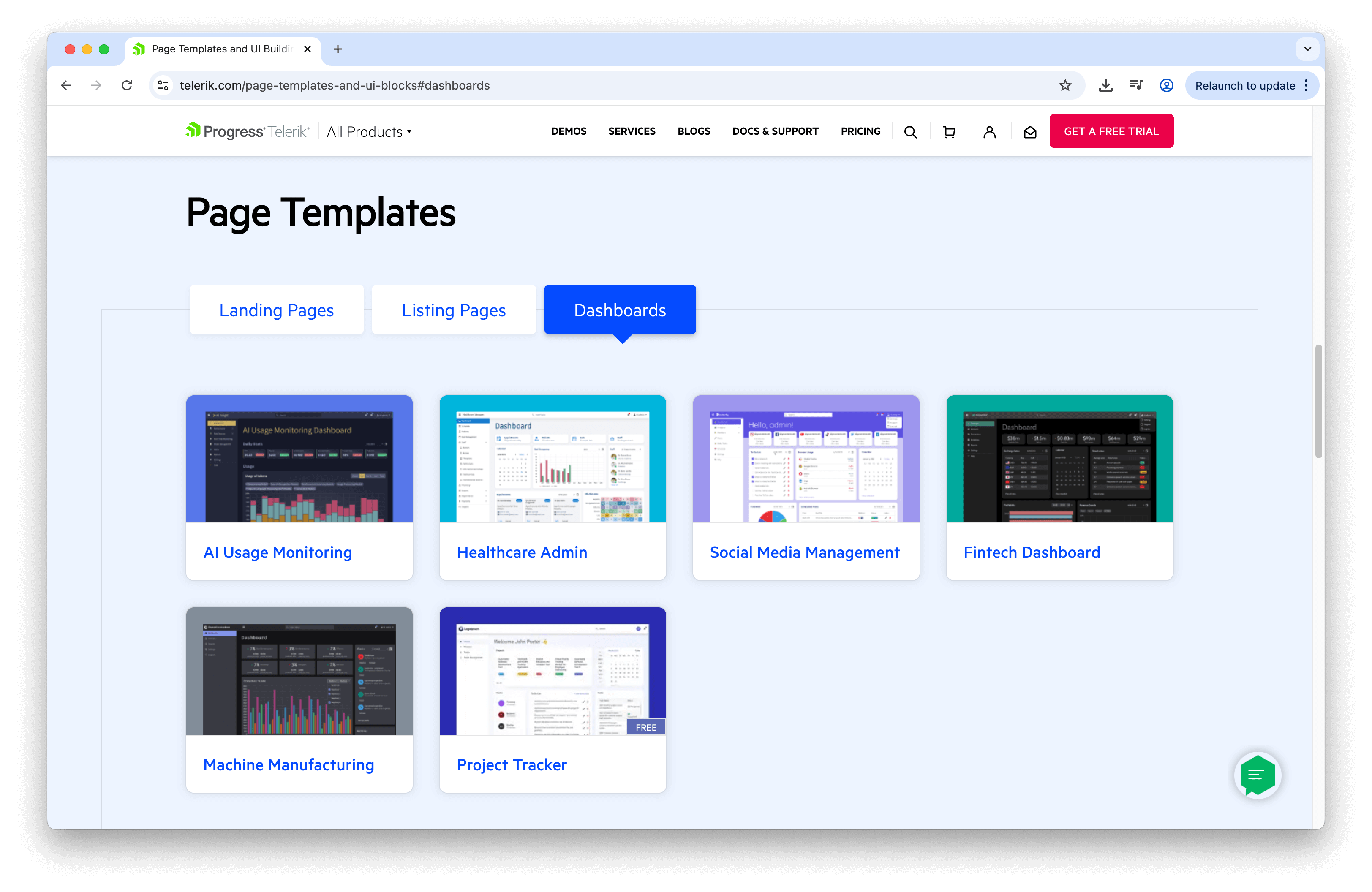
Building Blocks
While Page Templates provide complete pages, Building Blocks offer modular UI patterns that you can mix and match to create custom layouts. With over 50 ready-to-use blocks, you can quickly assemble professional interfaces by copying and pasting the code for the blocks you need.
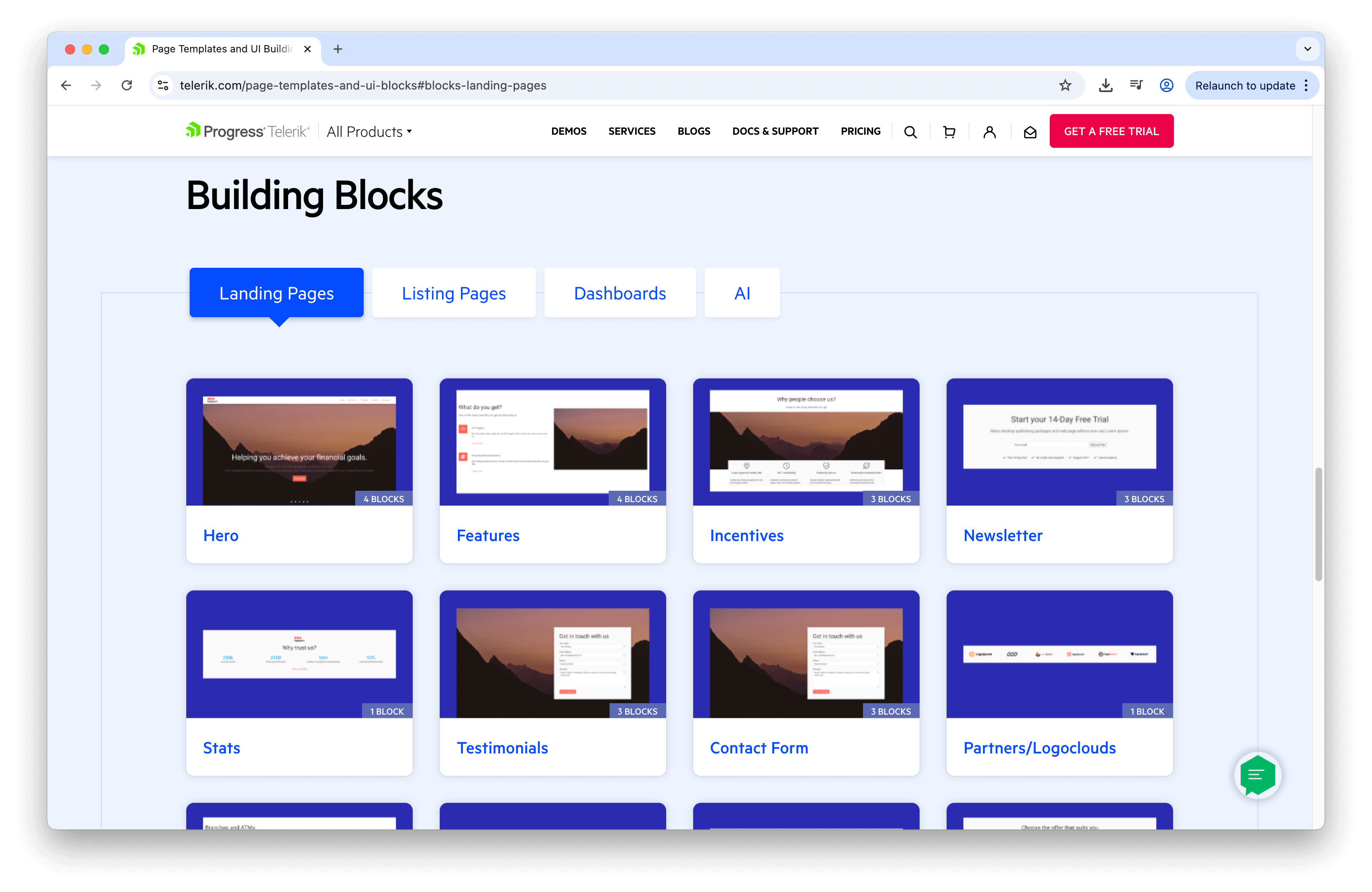
AI Building Blocks
With AI becoming integral to modern applications, creating intuitive AI-powered interfaces requires thoughtful design elements that support the unique patterns of AI interaction. Users expect conversational experiences, transparent sourcing and the ability to refine AI-generated content. The new AI Building Blocks address these needs with purpose-built components designed specifically for AI workflows.
The AI category introduces three specialized blocks that cover the most common AI interface patterns. Let’s explore each one below.
AI-Powered Editor
The AI-Powered Editor serves as the core interface for refining AI-generated content. After users input their prompts and receive initial results, they need a space to edit, enhance and perfect the output.
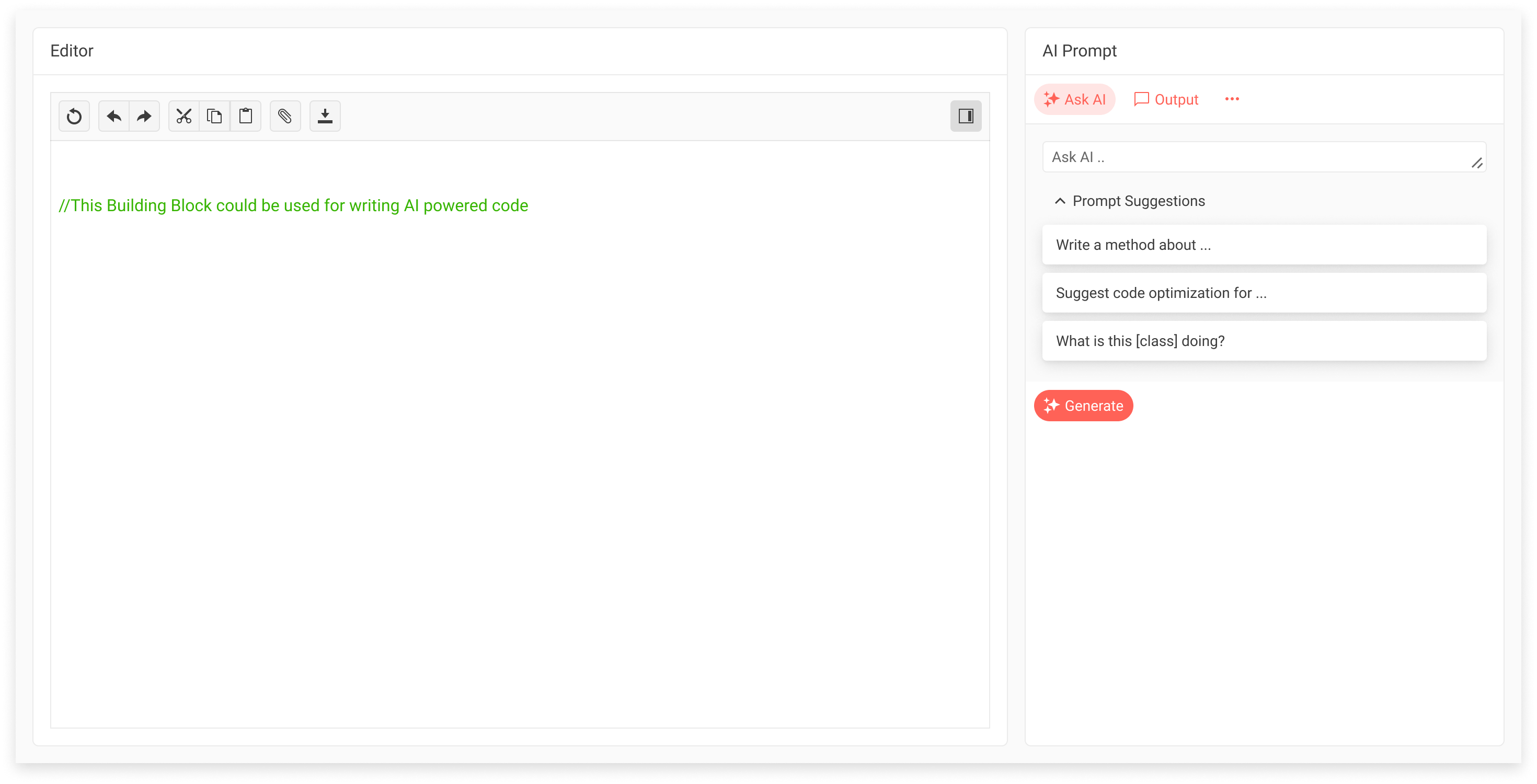
Key features of the AI-Powered Editor include:
- Full-width layout that maximizes workspace
- Flexible content areas accommodating various formats
- Intuitive editing controls similar to familiar design tools
- Real-time preview capabilities
Two variants of the AI-Powered Editor are available, each optimized for different content types and editing workflows.
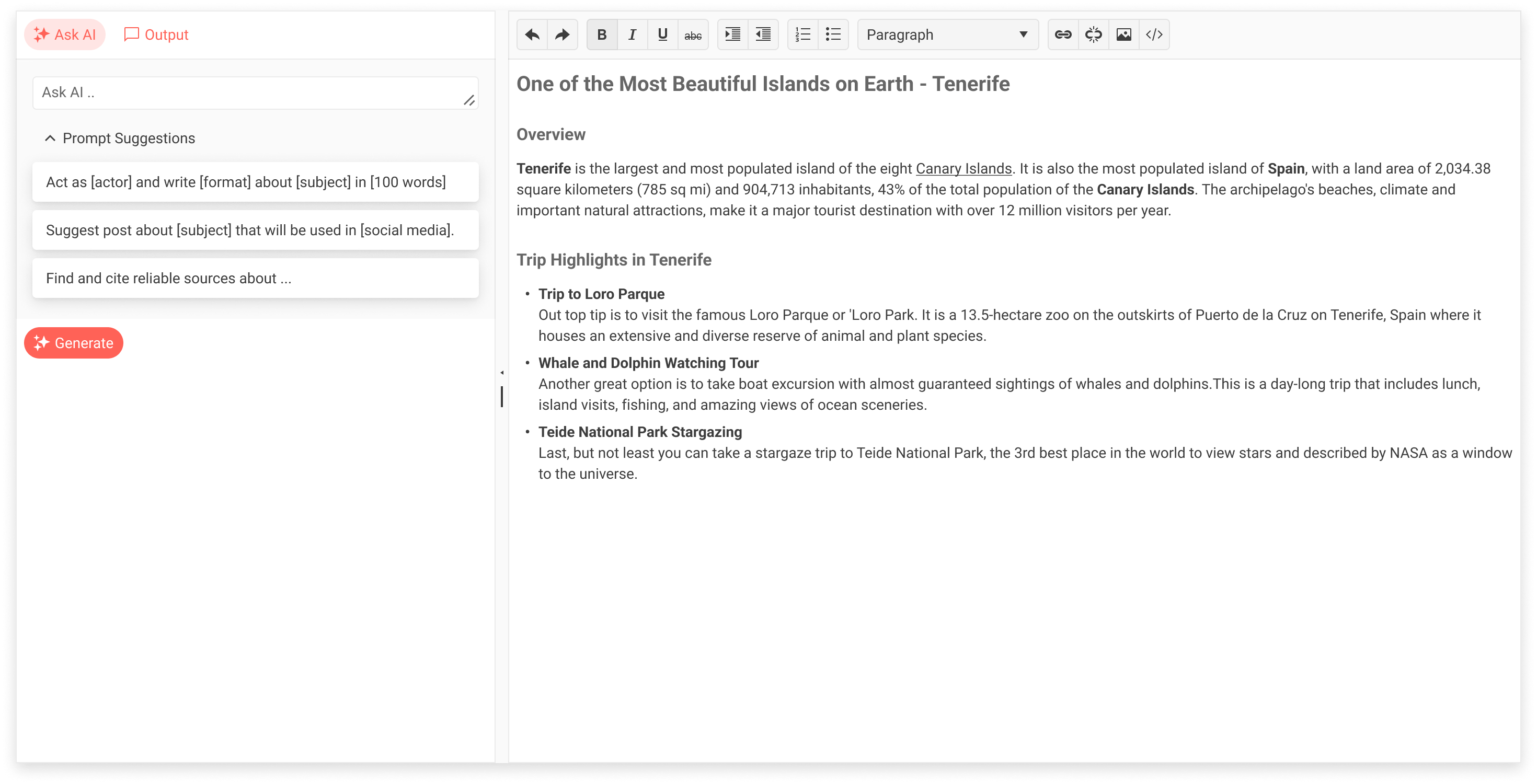
Welcome AI
First impressions matter, especially when introducing users to AI-powered features. The Welcome AI building block creates an inviting entry point that guides users into the AI experience while setting appropriate expectations.
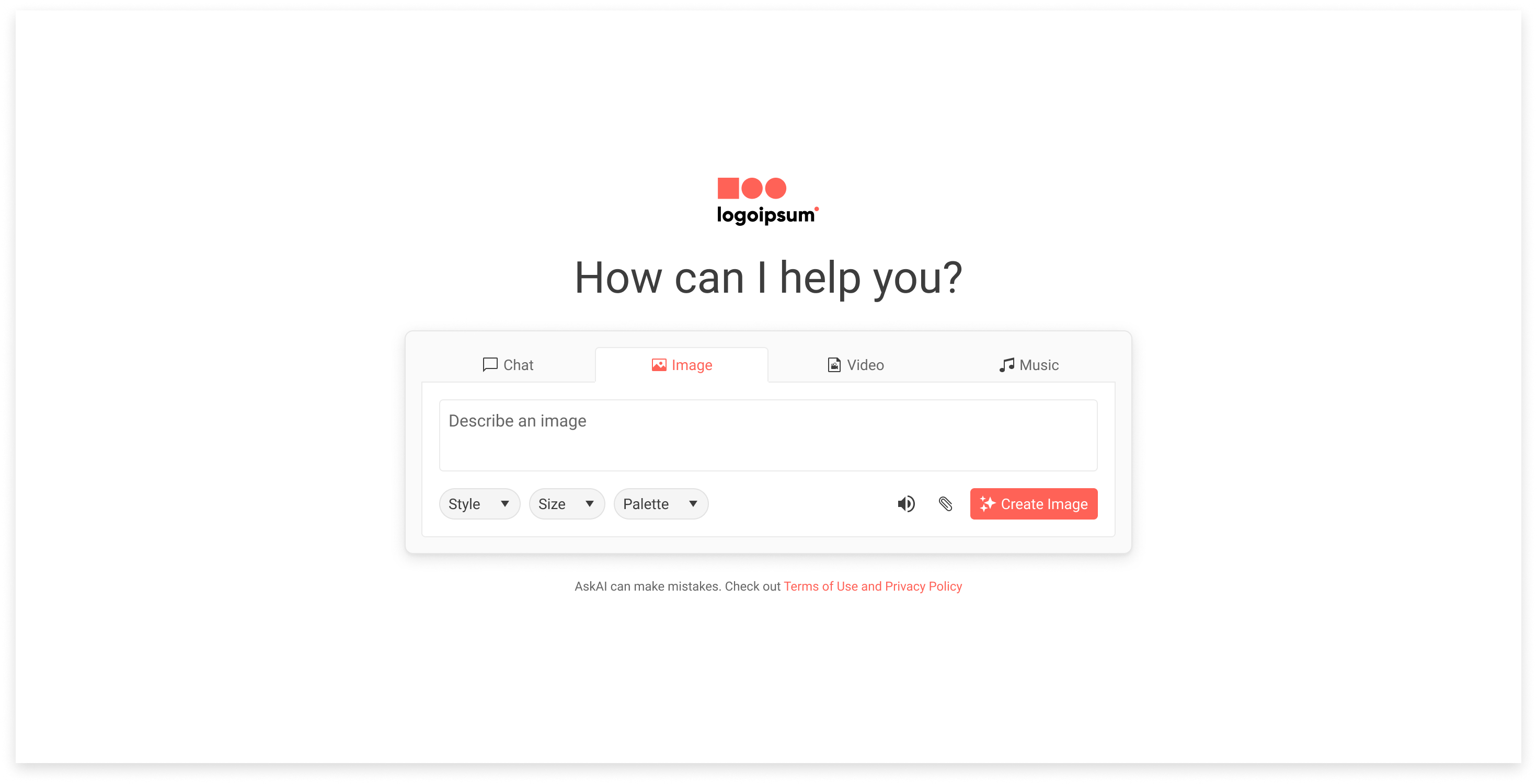
This component combines several key elements: a welcoming message that sets the tone, a prompt input field for user queries, quick filter options for common tasks and a transparency disclaimer about AI capabilities.
The Welcome AI block takes a full-width approach, creating a focused environment for user interaction. It includes four distinct variants, each designed for different use cases. These range from a simple prompt interface for straightforward queries to category-based filters for guided interactions, suggested actions and multi-modal options supporting text, image or other input types.
Here’s another variant as an example:
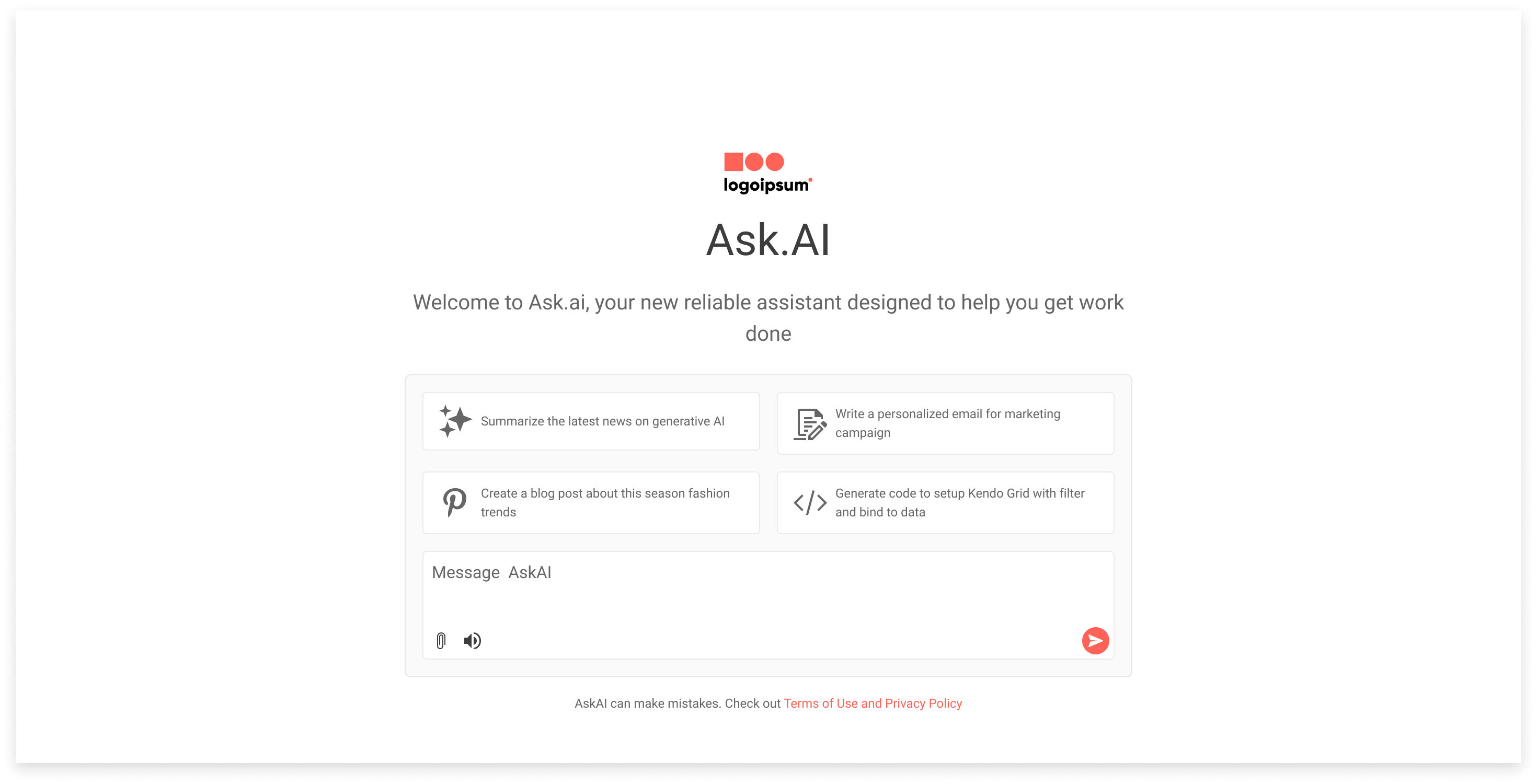
By providing clear starting points and preset options, the Welcome AI block reduces the friction of getting started with AI features.
Conversational Sources
Trust and transparency are crucial when working with AI-generated content. The Conversational Sources building block addresses this by providing clear references to the information sources that informed the AI’s responses.

This component displays source information in an easily digestible card format, featuring source titles and descriptions, direct links to original content, relevant quotes or excerpts and visual indicators for source types.
Two variants offer different visual approaches to presenting sources, allowing you to choose the style that best fits your application’s design language.

By making source information readily available, this component builds user confidence in AI outputs while encouraging deeper exploration of the referenced material.
Wrap-up
The new AI Building Blocks in Telerik and Kendo UI represent a helpful step forward in simplifying AI interface development. These components address the unique challenges of creating AI-powered experiences, from welcoming users and collecting prompts to editing results and providing transparent sourcing.
To explore these new AI Building Blocks and see them in action, check out the official documentation! And learn about the further AI upgrades available in 2025 Q3 release, with AI Coding Assistants coming to all the major framework libraries.

Hassan Djirdeh
Hassan is a senior frontend engineer and has helped build large production applications at-scale at organizations like Doordash, Instacart and Shopify. Hassan is also a published author and course instructor where he’s helped thousands of students learn in-depth frontend engineering skills like React, Vue, TypeScript, and GraphQL.

